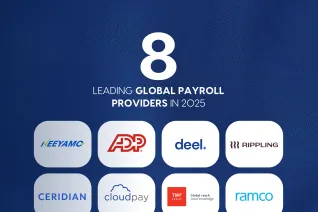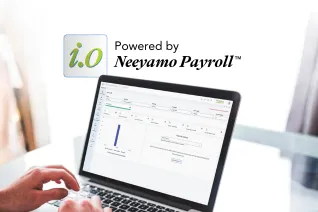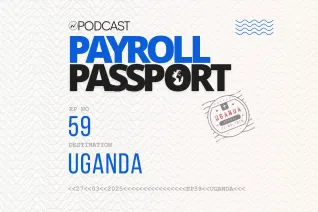Optimizing Payroll and Workflows for a Seamless Employee Experience

A well-structured payroll workflow is essential for any business. When payroll processes run smoothly, employees receive timely wages, compliance risks decrease, and administrative burdens lighten. However, payroll inefficiencies can lead to costly mistakes, compliance issues, and employee dissatisfaction.
According to a 2023 Ernst & Young study, businesses spend an average of 29 hours per month on payroll-related tasks. A report by Thomson Reuters found that payroll errors affect 1 in 3 businesses, with overpayments or underpayments leading to employee frustration and increased turnover. Add to that the risk of non-compliance—where even minor missteps can result in penalties averaging $845 per year per employee—and the case for payroll optimization becomes clear.
In this guide, we’ll explore the key challenges, solutions, and strategies to optimize payroll and supporting workflows—transforming them into streamlined, compliant, and employee-friendly processes.
Challenges in Payroll and Workflow Management
Businesses face several payroll and workflow management challenges:
- Manual Errors – Payroll mistakes can stem from misentered data, outdated spreadsheets, or overlooked deductions. These errors don’t just affect payroll figures—they damage employee trust and lead to time-consuming corrections.
- Compliance Risks – Navigating the complexities of employment law, tax withholdings, and benefits regulations is no small feat. A misclassification of employee status or a missed tax update can expose the business to fines and legal scrutiny.
- Time-Consuming Processes – Many businesses still rely on legacy systems or spreadsheets, creating bottlenecks and increasing the risk of delays. This not only ties up internal resources but also shifts attention away from strategic initiatives.
- Lack of Integration – When payroll systems don’t sync with HR, time tracking, or accounting tools, it leads to data silos and double handling. This fragmentation increases error rates and complicates reporting and audits.
- Data Security Concerns – Payroll data includes sensitive personal and financial information. Without robust cybersecurity measures, businesses are vulnerable to breaches that could lead to identity theft, financial loss, and reputational damage.
Addressing these issues is critical for an optimized payroll and workflow system.
ALSO READ I Common Payroll Challenges That Businesses Must Overcome
The Solution: Optimizing Payroll with Technology and Strategy
To create a frictionless payroll experience, businesses should implement:
- Data Accuracy – Accurate employee data is the foundation of reliable payroll processing. Maintaining up-to-date records on tax forms, benefit selections, working hours, and personal details ensures that each payroll cycle reflects the correct information. Integrated databases and real-time updates reduce the risk of human error and help maintain consistency across departments.
- Automation – Automation transforms how payroll is managed by eliminating repetitive tasks such as calculating deductions, generating pay slips, or filing tax documents. By configuring rules-based engines, businesses can reduce their reliance on manual input, saving time and reducing the margin for error. Automation also ensures consistency, enabling smooth handling of complex scenarios like prorated salaries, bonuses, or multiple pay rates.
- Regulatory Compliance – Staying aligned with ever-evolving local, state, and federal tax laws requires vigilance. A compliant payroll system must be able to automatically apply changes in tax codes, manage different employment classifications, and produce audit-ready reports. Leveraging compliance-centric tools or external advisors can further protect businesses from liabilities and penalties.
- Employee Self-Service – Self-service portals empower employees to take control of their payroll-related needs. From downloading payslips to updating tax forms or submitting expense claims, these tools reduce HR bottlenecks while giving employees greater transparency and ownership. This fosters trust and improves the overall employee experience.
- System Integration – Payroll should not operate in isolation. Integrating payroll with HR platforms, accounting software, and time-tracking tools ensures real-time data flow, minimizes duplication, and improves reporting accuracy. A connected system also allows managers to make informed decisions based on a holistic view of labor costs, performance, and compliance.
These strategies improve operational efficiency and employee satisfaction.
Implementation Considerations: Steps to a Streamlined Workflow
Step 1: Efficient Payroll Setup
- Collect and securely store employee data (tax forms, direct deposit details, benefits).
- Align payroll schedules with business cash flow and employee expectations.
Step 2: Choosing the Right Payroll Software
- Automate salary calculations, tax deductions, and compliance reporting.
- Integrate with HR, IT, and finance tools for seamless operations.
Step 3: Automating Payroll Workflows
- Integrate payroll with time-tracking systems.
- Automate tax deductions, direct deposits, and compliance alerts.
Step 4: Maintaining Compliance and Security
- Regularly update payroll tax tables and employee classifications.
- Implement cybersecurity measures for payroll data protection.
Pro Tip: Outsourcing payroll management can reduce compliance risks and free up business resources.
Step 5: Enhancing the Employee Experience
- Self-Service Portals – Allow employees to access pay stubs, tax details, and benefits.
- Instant Payment Options – Offer flexible salary disbursements.
- Clear Payroll Policies – Improve transparency and reduce confusion.
Data Insight: Companies using payroll self-service portals report higher employee engagement and fewer inquiries.
DOWNLOAD NOW | Navigating the Most Common Payroll Processing Challenges
Payroll’s Role in Employee Experience and Retention
Payroll directly impacts employee satisfaction and loyalty. Timely, accurate pay fosters trust, while delays or errors can quickly erode it. Transparent payslips, easy access to payroll data, and prompt issue resolution enhance the employee experience, reinforcing engagement and retention.
Payroll also ties into benefits administration—when compensation, bonuses, and deductions are managed seamlessly, employees feel valued, boosting morale and advocacy. Organizations that treat payroll as a strategic employee experience tool can significantly reduce turnover and improve workforce motivation.
Beyond Payroll: Optimizing IT and Business Workflows
Efficiency goes beyond payroll—optimizing IT and business workflows enhances security, reduces downtime, and improves data accuracy.
- IT & Business Support: AI-driven ticketing, cybersecurity measures, and seamless payroll system integration minimize disruptions.
- HR & Onboarding: Digital onboarding, automated tax forms, and self-service payroll portals simplify processes.
- Financial & Vendor Management: Automated invoicing, centralized vendor tracking, and streamlined expense management improve financial transparency.
Outsourcing business operations can provide expert support, streamline workflows, and reduce IT disruptions.
Driving Smarter Workflows with AI & Analytics
AI and data analytics are transforming how businesses approach payroll and workflow management. Instead of reacting to issues after they occur, predictive analytics enables businesses to forecast compliance risks, detect anomalies in payroll data, and flag potential errors before they impact employees or regulatory filings.
By using machine learning algorithms, payroll systems can automatically identify trends—such as frequent late submissions or irregular overtime—that may indicate policy gaps or inefficiencies. These insights empower decision-makers to fine-tune processes, adjust workloads, and improve workforce planning.
AI also accelerates routine tasks such as tax calculations, leave accruals, and report generation, freeing up HR and finance teams for more strategic initiatives. Combined with real-time dashboards and performance tracking, businesses gain a holistic view of payroll health and can confidently scale their operations with minimal risk.
The result? Reduced manual workload, faster processing times, fewer compliance mishaps—and a smarter, more agile business overall.
ACCESS NOW | Optimizing Global Payroll Operations With Neeyamo Payroll 3.0
Optimize Your Payroll & Workflows
Payroll is more than just processing payments—it’s a key driver of efficiency, compliance, and employee satisfaction. Integrated automation and workflow enhancements create a seamless system for growth.
Ready to streamline your payroll and operations? Start optimizing today with Neeyamo! Reach out to us at irene.jones@neeyamo.com for more information.
Latest Resources
Stay informed with latest updates
If you're curious and have a thirst for knowledge pertaining to the HR, payroll, and EOR universe, don't miss out on subscribing to our resources.















